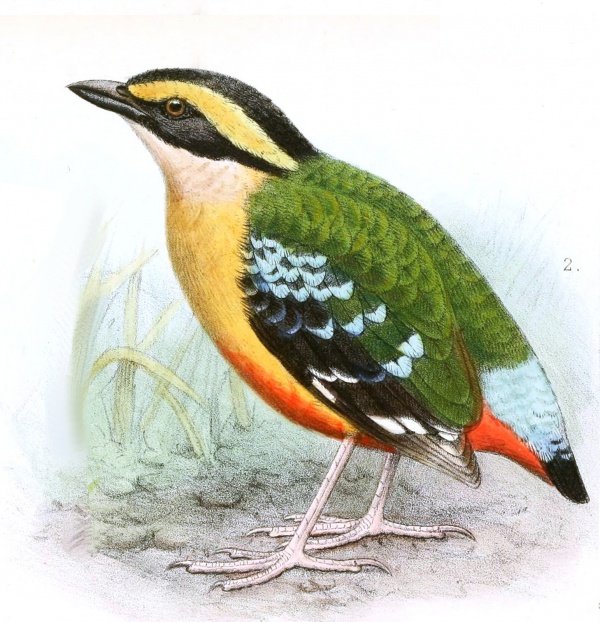Facts About African pitta
The African pitta is a vibrant bird native to the Afrotropical region, belonging to the Pittidae family. Known for being both resident and migratory, it travels between equatorial and southeastern Africa. Despite its striking colors, spotting an African pitta is a rare delight, as they are quite shy and their calls are infrequently heard.
These birds enjoy foraging in the leaf litter beneath the forest canopy, either scratching around for food or remaining perfectly still. After the rains, breeding birds become more vocal and can be seen displaying from the mid-canopy.
The African pitta was first described by Louis Jean Pierre Vieillot in 1816 and given the scientific name Pitta angolensis. There are three recognized subspecies, though experts debate their precise classification. This bird is closely related to the green-breasted pitta, and together they form part of an Old World superspecies.
Both male and female African pittas feature similarly colorful plumage. They are typically found in deciduous riparian forests in southeastern Africa, with specific breeding and migration habits. Interestingly, some individuals even migrate beyond their usual range.
When feeding, African pittas hop around and scratch in the leaf litter, searching for insects and mollusks. During the breeding season, these monogamous pairs perform displays and build dome-shaped nests in tree branches.
However, habitat loss poses a growing concern for the African pitta, leading to declining populations in some areas. Conservation efforts are essential to protect their habitats and address threats such as habitat destruction and collisions with lighted structures.

 Cameroon
Cameroon